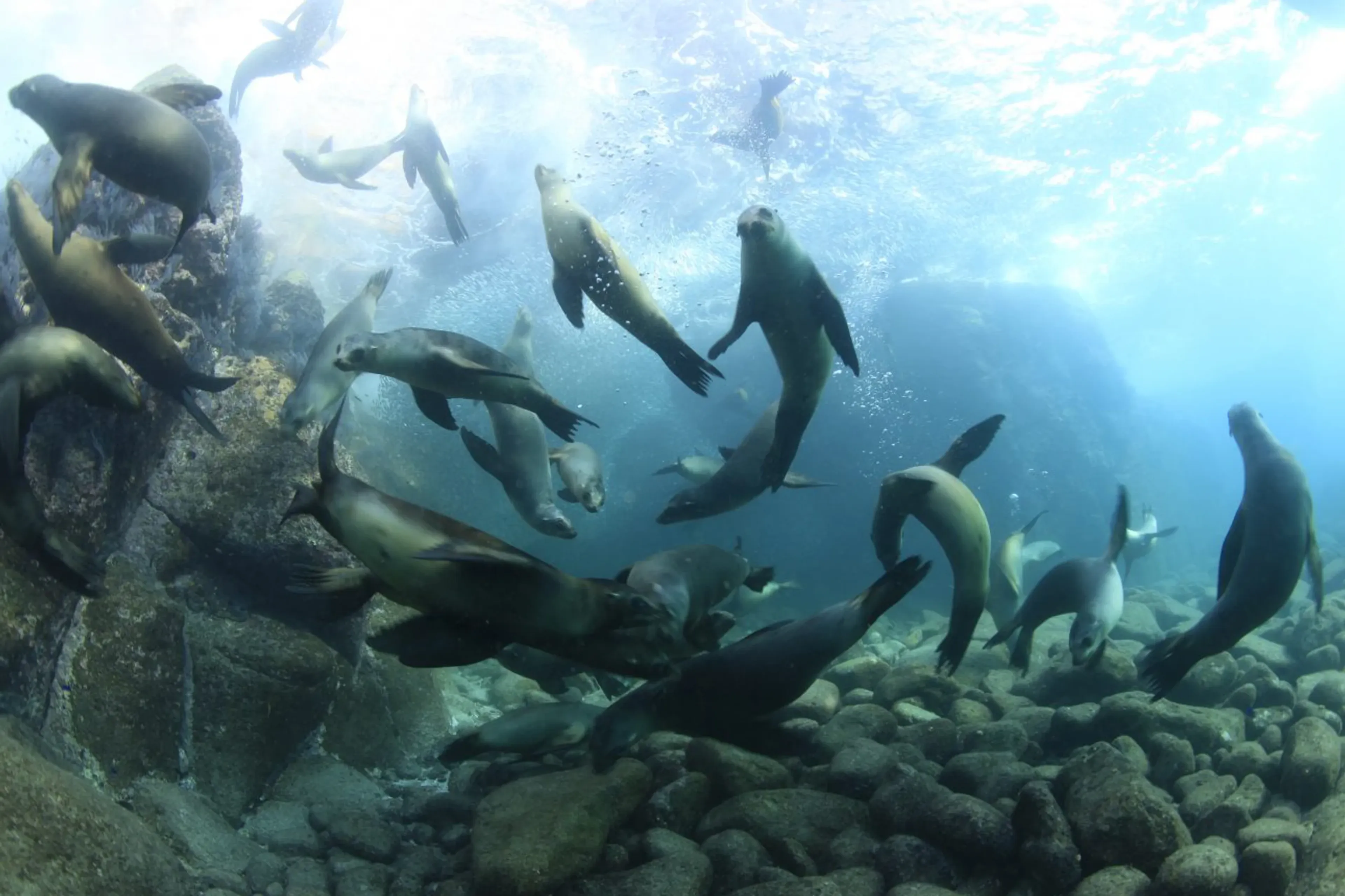Dive the Sea of Cortez With This Amazing Value Liveaboard!
Why We Love It
The Sea of Cortez is one of the best places to dive in Mexico. In this World Heritage Site, you'll get to see friendly sea lions, some schooling Mobula rays, some whale sharks, huge schools of sardines, and even some hammerhead sharks! This excellent-value liveaboard offers several itineraries going to La Paz, and sometimes even to Cabo Pulmo. We love its friendly team, the comfortable shared spaces onboard, and the cabins all located on the main deck!
Conservation
The liveaboard regularly invites onboard scientists who are working to protect manta rays and other pelagic species.
Who Is It For?
For divers of all levels who want to experience the rich marine life of the Sea of Cortez with few tourists. Non-divers are also welcome.
Prices and Dates
Loading...
Dive Briefing!
Marine Life
- Off La Paz, the dive sites are famous for their spectacular whale shark sightings, occasional Mobula rays passing by in big groups - including on night dives, its playful sea lions, and its huge schools of pelagic fish (jacks, tuna, sardines)!
- Dolphins and hammerhead sharks are also occasionally spotted.
- There are plenty of critters to observe: nudibranchs, crabs, shrimp, snails, and more.
- Further South, in Cabo Pulmo, the marine reserve has been labeled as a “Hope Spot” by Mission Blue, Dr. Sylvia Earle’s NGO. It is home to the oldest of only three coral reefs on the west coast of North America.
- Bull sharks are almost always there on the wreck dive in Cabo Pulmo.
Dive Conditions
- Season: year round, with an abundance of species between July and November
- Currents: little to medium
- Visibility: 15 to 30 m (50 to 98 ft)
- Water Temperature: 22° to 28°C (72° to 82°F) June to November. 16° to 22°C (61° to 72°F) December to May
- Depth: shallow and deep dives
Dive Sites
- You will dive all along your trip, even on the last day.
- Sites you may visit (depending on the itinerary) are La Paz Bay, Swanee Reef, Fang Ming, San Francisquito, Los Islotes, La Reina, Punta Lobos, El Bajo, and some sites in Cabo Pulmo.
The Team
- Dive operator in the area since 2000
- Boat renovated in 2013
- Languages spoken: English, Spanish
- Nitrox course available on board with an additional fee
- Maximum 6 divers per guide
Safety Information
- Equipment Recommended: a 3 to 5 mm wetsuit, a hood, and the usual dive equipment
- Insurance: Both dive insurance and travel insurance are mandatory. We recommend DAN Europe which has plans to cover both - ask us for a quote.
- Nearest Hyperbaric Chamber: La Paz, Mexico
Visas, Flights, and More!
Visa Requirements
- Many countries’ residents do not require a visa to stay in Mexico for up to 180 days.
- Please check the current visa policy that applies for your country on Mexico's Ministry of Tourism website.
How to Get There
- The trip starts and finishes in La Paz (LAP), Mexico.
- Luggage drop on the boat available on the first day since 9am.
- On the first day, enjoy dinner in town, and be back at 18:00 for briefing.
- International flights to La Paz (LAP), Mexico.
- On the last day, you'll disembark the ship around 4:00 p.m. in La Paz.
- Book one night in La Paz before flying as there will be two dives on the last day. Transfer to a local hotel in La Paz is included on disembarkation day.
More...
- Bring reef-safe sunscreen, a hat, a rash guard, a sweater or light-weight jacket, and some comfortable walking shoes.
Only Top
Destinations
At the
Right Season
With Responsible
Dive Operators
No Added
Booking Fees
Can we help you?
© 2025 SeaCrush SASU, Reg #: IM078170016 All rights reserved.

